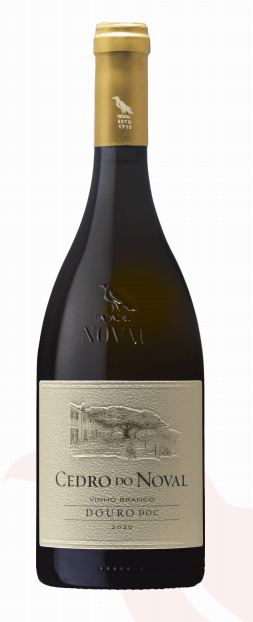This website uses cookies so that we can provide you with the best user experience possible. Cookie information is stored in your browser and performs functions such as recognising you when you return to our website and helping our team to understand which sections of the website you find most interesting and useful.
‘Thrilling prospects’ for white wines from the Douro, declares Seely
Although a region best known for Port and red wines, there are “thrilling prospects” for whites from Portugal’s Douro Valley, according to managing director of Quinta do Noval, Christian Seely.

During a virtual tasting last month on the table wines from this famous vintage and tawny Port specialist in the heart of the Douro, Seely expressed his particular excitement for the quality potential of whites from this part of Portugal.
Having introduced the 2020 vintage of the estate’s Cedro do Noval Vinho Branco 2020, he said, “White wines in the Douro have the most thrilling prospects in front of them.”
Continuing he said, “We have been making quality reds for a little long, but I think we are beginning to discover the quality potential for whites in the Douro.”
Such a statement may surprise those who know the Douro, which is a region famed for producing rich and tannic fortified wines, and powerful, ripe reds, as opposed to fruity whites with fresh acidity.
However, as proved with Quinta do Noval’s single white wine, it is possible to create a white with richness and refreshment, even from the same property that makes some of the most long-lived Ports in the world, and intense red wines too.
Key to the quality and character of these wines according to Seely are a combination of factors, from the well-adapted native Portuguese grapes used to make the whites – which at Noval are Viosinho and Gouveio – to the schist-based soils, along with the scope for planting at high altitudes – the Noval vineyards extend to 500 metres above sea level.
He explained, “We have wonderful local white varieties that have been selected over time for their suitability for the region, so our white varieties have a high natural acidity, even in the hot and dry climate of the Douro.”
Nevertheless, he said that the grapes are planted “high up”, having chosen the two “most qualitative varieties” for a 2.6 hectare plot, which was planted in 2007, in place of an olive grove.
“There is a surprising freshness to the wines, and that’s natural, we don’t acidify our dry white wines,” he said.
“It’s counterintuitive; there are received ideas about what a hot country white wine might be, but we tend to produce fresh whites with minerality, and that has a lot of that with schistous rock [which is the dominant type in the Douro],” he added.
While Seely only produces one white wine from Noval, he intends to introduce a second ‘reserva’ offering, as the vines become more established.
“We planted the vineyard in 2007, which we think of as quite young, but we will graduate to a reserva white in not too long a time,” he told db, saying that such an additional wine would use the oldest vines from the highest sites, while stressing that a more expensive expression would “not be a super oaky reserva”.
Notably, the current white wine has a delicate, if perceptible oak influence, with only a hint of toast and wood shaving in its young state, despite being fermented and aged in 30% new oak 225 litre barrels.
Seely said he was using French oak staves to make the barriques in Portugal, although the ends of the barrels comprise local acacia wood, which “gives the wine a less woody character; it enables us to use a higher proportion of new oak without making the wine more oaky.”

Despite Seely trialing French grapes such as Cabernet Sauvignon, Petit Verdot and Syrah at Noval for his red wines, he is not currently using any for his white wines at the property.
Nevertheless, at nearby estate, Quinta da Romaneira, which Seely also manages, he has planted Sémillon – a grape best known for its role in white Bordeaux; sweet wine Sauternes, as well as in the crisp dry whites of Australia’s Hunter Valley, and fortifieds of Madeira.
“We have been making a 100% Sémillon at Romaneira since 2019, and it’s pretty good; it gets ripe before everything else,” he said.
Explaining his decision to trial it at the Port and wine producing estate, he said, “Semillon is also a Douro variety called Boal – which is handy – and I love Sémillon, and I have a lot of experience of the grape.”
This stems from the fact that Seely also heads up the wine estates of AXA Millésimes, which include Quinta do Noval along with great Sauternes producing property Château Suduiraut, where Semillon is used in the sweet wine.
Seely said that it’s a grape that likes to get “really ripe”, making it suitable for the hot Douro valley, and, judging by the success of its performance at Romaneira, he said that it was likely he would now plant it at Noval too.
Cedro do Noval Vinho Branco 2020 has just been released with an RRP of £19-20. It comprises 65% Viosinho, 35% Gouveio and has a 13.5% abv.
Fermentation took place in French oak barrels for a period of 20 days at temperatures controlled between 16 and 18°C. There was no malolactic fermentation.
The wine was aged in French oak barrels, with 30% of new barrels, for about 6 months. Bâtonnage was done once a week for 3 months.

